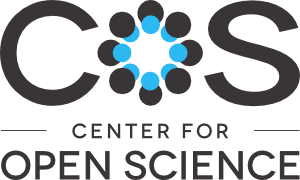Location
Our mission is to increase openness, integrity, and reproducibility of research.
These are core values of scholarship and practicing them is presumed to increase the efficiency of acquiring knowledge.
For COS to achieve our mission, we must drive change in the culture and incentives that drive researchers’ behavior, the infrastructure that supports their research, and the business models that dominate scholarly communication.
This culture change requires simultaneous movement by funders, institutions, researchers, and service providers across national and disciplinary boundaries. Despite this, the vision is achievable because openness, integrity, and reproducibility are shared values, the technological capacity is available, and alternative sustainable business models exist.
COS's philosophy and motivation is summarized in its strategic plan and in scholarly articles outlining a vision of scientific utopia for research communication and research practices.
Because of our generous funders and outstanding partners, we are able to produce entirely free and open-source products and services. Use the header above to explore the team, services, and communities that make COS possible and productive.
Members:
Resources
Displaying 96 - 100 of 447The political economy of land grabbing
"Land grabbing" or, less emotionally charged, large-scale land acquisitions (LSLA), which occur mainly in the Global South, have become the center of a heated political and academic debate. So far, economists have mostly abstained from this debate. This may possibly be explained by the fact that they view these kind of deals in land property primarily as an opportunity for improved local economic development in poor countries. Arguably, foreign investors are then assumed to be able to utilize arable, but mostly idle land more efficiently than locals (cf., e.g., Deininger/Byerlee, 2011).
Microsimulation of urban land use
The project ILUMASS (Integrated Land-Use Modelling and Transportation System Simulation) aims at embedding a microscopic dynamic simulation model of urban traffic flows into a comprehensive model system incorporating both changes of land use and the resulting changes in transport demand. The land-use component of ILUMASS will be based on the land-use parts of an existing urban simulation model, but is to be microscopic like the transport parts of ILUMASS.
Pattern of land distribution and tenancy in rural Andhra Pradesh
This paper examines the changes in the pattern of land distribution and tenancy in Rural Andhra Pradesh, during 1953-54 to 1991-92, based on NSS data.
CONTRIBUTION OF AFFORESTATION TO SUSTAINABLE LAND MANAGEMENT IN UKRAINE
This paper focuses on the establishment of forest plantations on bare lands and marginal agricultural lands: a multifunctional afforestation programme for Ukraine is elaborated. The multiple forest functions are limited in this research to wood production and erosion prevention. Ukraine is faced with erosion on 35% of its arable lands. Some 20 million ha of lands are experiencing various stages of erosion, and it is increasing with time.


